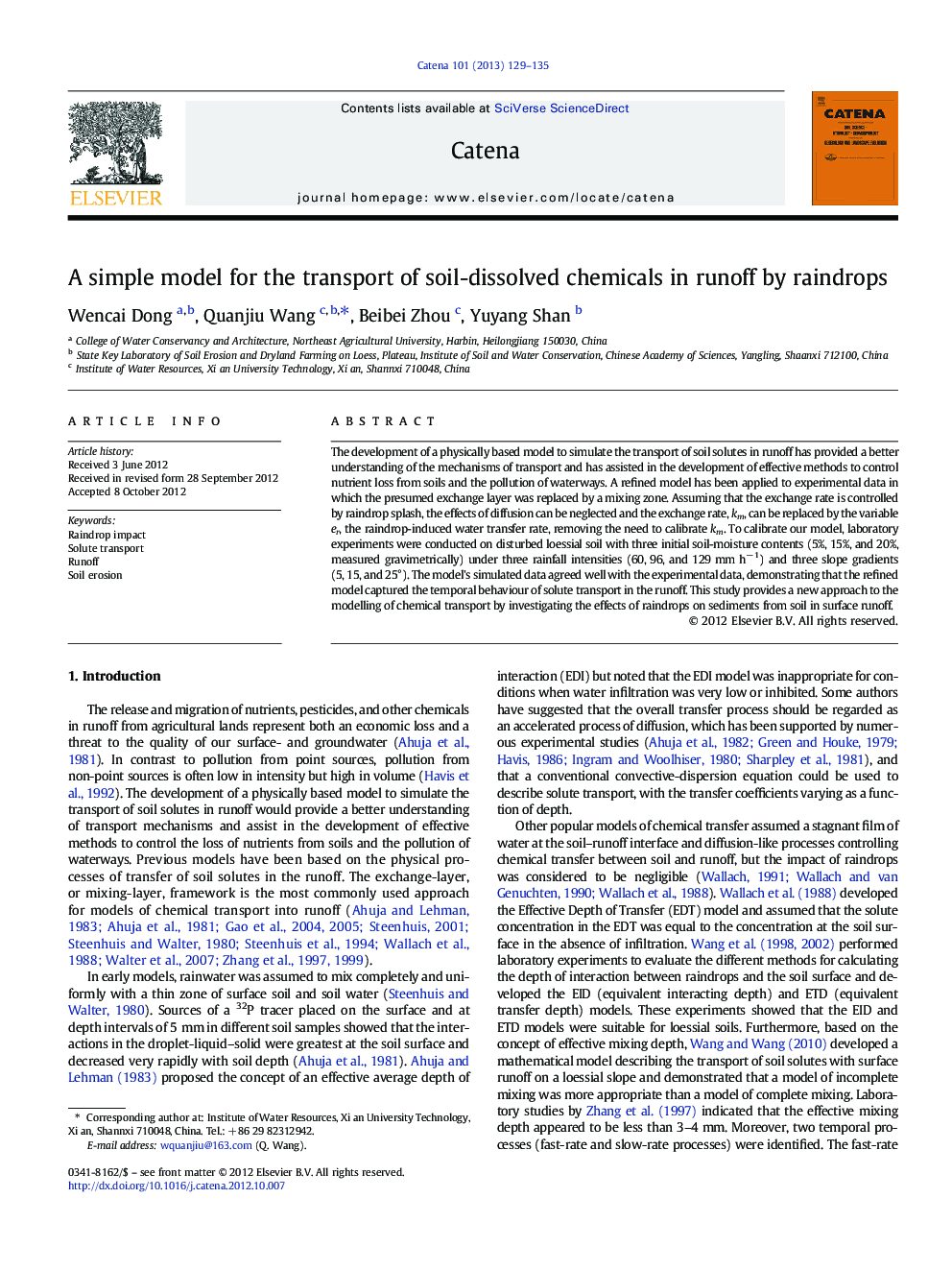| Article ID | Journal | Published Year | Pages | File Type |
|---|---|---|---|---|
| 4571620 | CATENA | 2013 | 7 Pages |
The development of a physically based model to simulate the transport of soil solutes in runoff has provided a better understanding of the mechanisms of transport and has assisted in the development of effective methods to control nutrient loss from soils and the pollution of waterways. A refined model has been applied to experimental data in which the presumed exchange layer was replaced by a mixing zone. Assuming that the exchange rate is controlled by raindrop splash, the effects of diffusion can be neglected and the exchange rate, km, can be replaced by the variable er, the raindrop-induced water transfer rate, removing the need to calibrate km. To calibrate our model, laboratory experiments were conducted on disturbed loessial soil with three initial soil-moisture contents (5%, 15%, and 20%, measured gravimetrically) under three rainfall intensities (60, 96, and 129 mm h− 1) and three slope gradients (5, 15, and 25°). The model's simulated data agreed well with the experimental data, demonstrating that the refined model captured the temporal behaviour of solute transport in the runoff. This study provides a new approach to the modelling of chemical transport by investigating the effects of raindrops on sediments from soil in surface runoff.
► We refined power functions of a model of solute transport. ► Our results indicated that the constant parameter, ρ, was equal to 1 or 2. ► The soil detachability was confirmed to be independent of the rain intensity.
